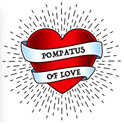|
Steve Miller Band Capitol 3732 Jan. 1974 Billboard: #1
Miller, the son of a pathologist, was born in Milwaukee, Wisconsin, on October 5, 1943, but grew up in Dallas, Texas. At 12, he formed an R&B band that later featured vocals by another blue-eyed soul brother, Boz Scaggs. When Miller and Scaggs attended the University of Wisconsin, they fronted a group called the Fabulous Night Trains that tore up the frat circuit with its hard-driving soul music. After college, Miller drifted down to Chicago, and teamed up with keyboardist Barry Goldberg to form the Goldberg-Miller Blues Band. Moving to San Francisco in 1966, MIller started a band in four days, played a gig at the Avalon Ballroom and became an immediate local favorite in those days of psychedelia. When a record contract with Capitol seemed imminent, Scaggs returned from a folksinging stint in Sweden to join the group. The first two Steve Miller Band albums -- Children of the Future and Sailor -- combined straight-ahead blues with seamlessly produced, Beatlesque rock suites. Many consider them Miller's finest work. In 1969, Scaggs left the band to pursue what would be a highly-successful solo career (recording hits like "Lowdown" and "Lido Shuffle"). Miller spent the early '70s playing some of the best rock music ever recorded, founded in the blues, grand-scaled and harmonically rich. Although he developed an enthusiastic following, he remained a relative unknown. "People tended to be fans of the albums," he said, "Not of Steve Miller." He didn't break out as a mainstream superstar until his eighth LP, released in the autumn of 1973: The Joker.
"The Joker" entered the Billboard Hot 100 at number 86 on October 20, 1973. Twelve weeks later it was number one. Although the album it came from was certified gold, Miller was uncertain about its commercial potential. "That's how bright I am," Miller admitted in 1977. "I just decided, man, that it's not my gig, not my job so I said, 'You think there's a single on it? You're the guys that've gotta go out and... make people play it.' They were listening to it and some guy stood up -- just like Brigham Young -- and said, 'That's a hit!' They all just sort of stood up, with their fingers in the air, and started marching around going, 'That's a hit!'" Miller would take three years to deliver a followup to his number two album and its number one title track. 1976's Fly Like an Eagle yielded three Top 10 hits: its number one title tune, the number two "Rock 'n Me" and the number 11 "Take the Money and Run." The quadruple-platinum album consolidated his pop success and stayed on the Hot 200 album chart for nearly two years. 1977's Book of Dreams generated three more hits (the number eight "Jet Airliner," the number 17 "Jungle Love" and the number 23 "Swingtown." Although his 1981's Circle of Gold merely went gold -- a dissapointment when measured against his previous releases -- Miller climbed to the top of the US charts once again the following year with the title track from his Abracadabra album. An album of jazz covers, Born 2B Blue, was released in 1988 to enthusiastic critical reception. Miller continues to sell over a million copies a year of his Greatest Hits 1974-78 album, first released in 1978. Wide River, released by Polydor in 1993, was supported by a 50-city tour to a new generation of fans. Capitol released a career retrospective Steve Miller Band box set the following year. - Fred Bronson, The Billboard Book of Number One Hits, Billboard, 1988.
No comments so far, be the first to comment. |



